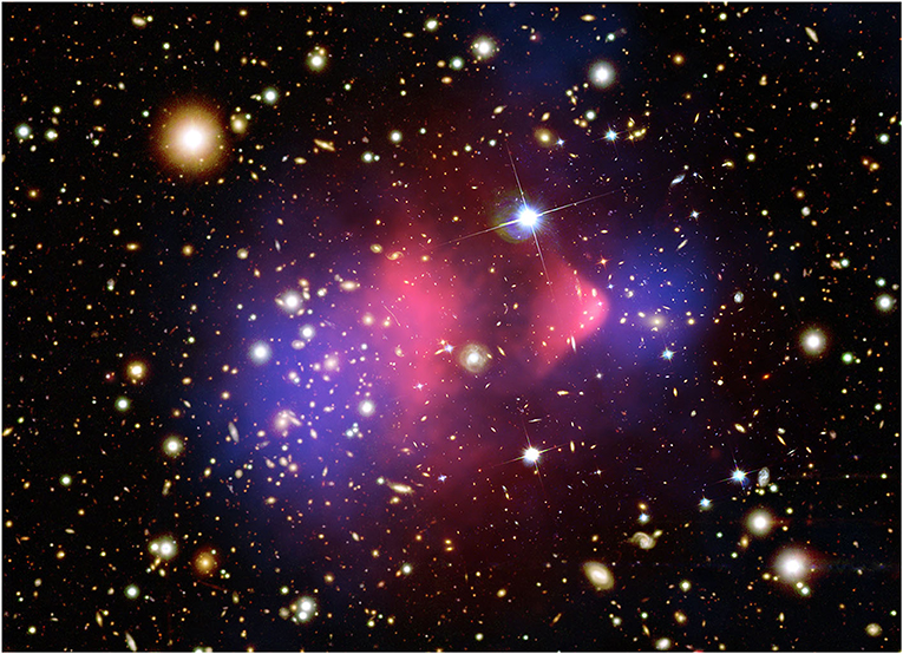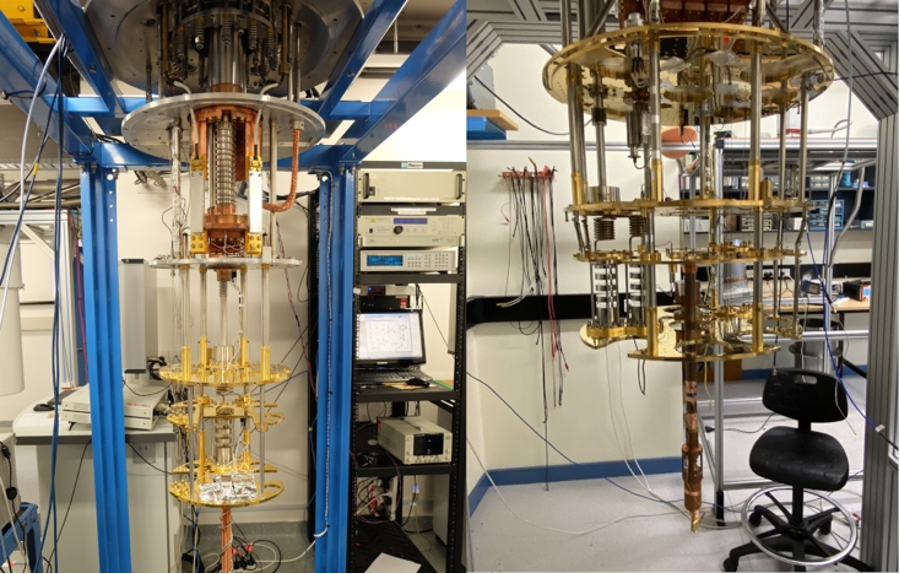First Phase of ‘ORGAN’ Experiment Provides Insight Into the Mystery of Dark Matter

Australia has made its mark in the search for dark matter, successfully completing the first run of the Oscillating Resonant Group AxioN (ORGAN) experiment and ruling out a type of axion that could make up the mysterious constituent.

pink areas are normal matter
As the name suggests, little is known about dark matter despite the fact that it makes up 27% of the universe and most of all matter. We cannot see dark matter directly since it doesn’t emit light, however, there are many observations that provide evidence for its existence. A popular example of this is the study of two galaxies that have recently collided, named the bullet cluster. The method of gravitational lensing was used by scientists to find the total mass (normal and dark matter) of the cluster. Although you might expect the total mass to come from normal matter, majority of the mass is not coming from the source of x-rays, but rather somewhere away from this region. Hence, there must be another unknown source which makes up most of the cluster- dark matter!

So how do we detect an invisible source? Since dark matter pulls on everything we see, it can be found all around us and even passes through us. In fact, as you’re reading this, a stream of dark matter is flowing through you at a rate of 2.5x10-16 kilograms per second! Because of this, detectors can be built on Earth to hopefully encounter dark matter. This is exactly what scientists at the University of Western Australia’s Quantum Technologies and Dark Matter Laboratory have done, using an axion haloscope- a type of detector invented in the 1980s. The experiment uses the theory that hypothetical particles called axions can make up dark matter under certain conditions, namely being that they have weak interactions with regular matter but still have mass. Axions can convert into photons in the presence of a strong magnetic field, which the haloscope can generate by using a large electromagnet called a superconducting solenoid. To make it easier for scientists to detect these peculiar particles, several hollow metal chambers are placed inside the magnetic field, trapping the photons which bounce around inside. Essentially, ORGAN looks for these weak signals produced by the axion-photon conversion.
However, scientists ran into a problem; everything that has a temperature will emit photons and cause noise. This makes it harder to detect the already faint dark matter signals amongst the chaos. Not to worry, since this can be combatted by cooling the haloscope in a dilution refrigerator to cryogenic temperatures of -273°C which greatly reduces the noise.
Another issue is that axions of a specific mass will convert photons to a certain frequency, but since the mass is unknown, ORGAN has to work on particular mass ranges, starting in regions where dark matter is most likely to exist. If no dark matter signal is detected, then an exclusion limit is set to say that there is either no dark matter in this axion mass region or the experiment is not sensitive enough to decipher between the signal and noise. Having recently completed its first run, ORGAN concluded that no dark matter signal was found in the axion mass range looked at, suggesting that this axion mass could potentially be ruled out as dark matter particles.
This is only the start of a multi-year plan to search for the nature of dark matter. The team are currently preparing for the next run which will be more sensitive and target a new unexplored mass range. To add to ORGAN, the Stawell Underground Physics Lab and SABRE experiments will follow to hopefully uncover more about the mystery of dark matter.
--
Image credits:
Cover image: Shutterstock
- X-ray: NASA/CXC/CfA/ M.Markevitch et al.; Optical: NASA/STScI; Magellan/U.Arizona/ D.Clowe et al.; Lensing Map: NASA/STScI; ESO WFI; Magellan/ U.Arizona/ D.Clowe et al.).
- ARC Centre of Excellence fo Dark Matter Particle Physics.
